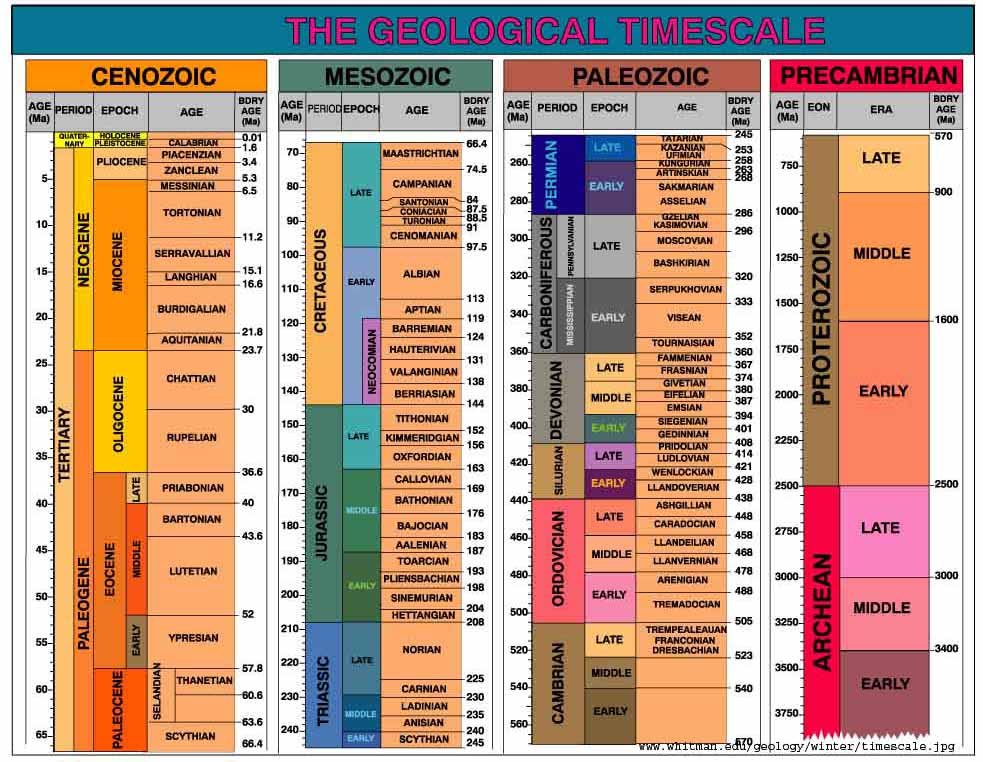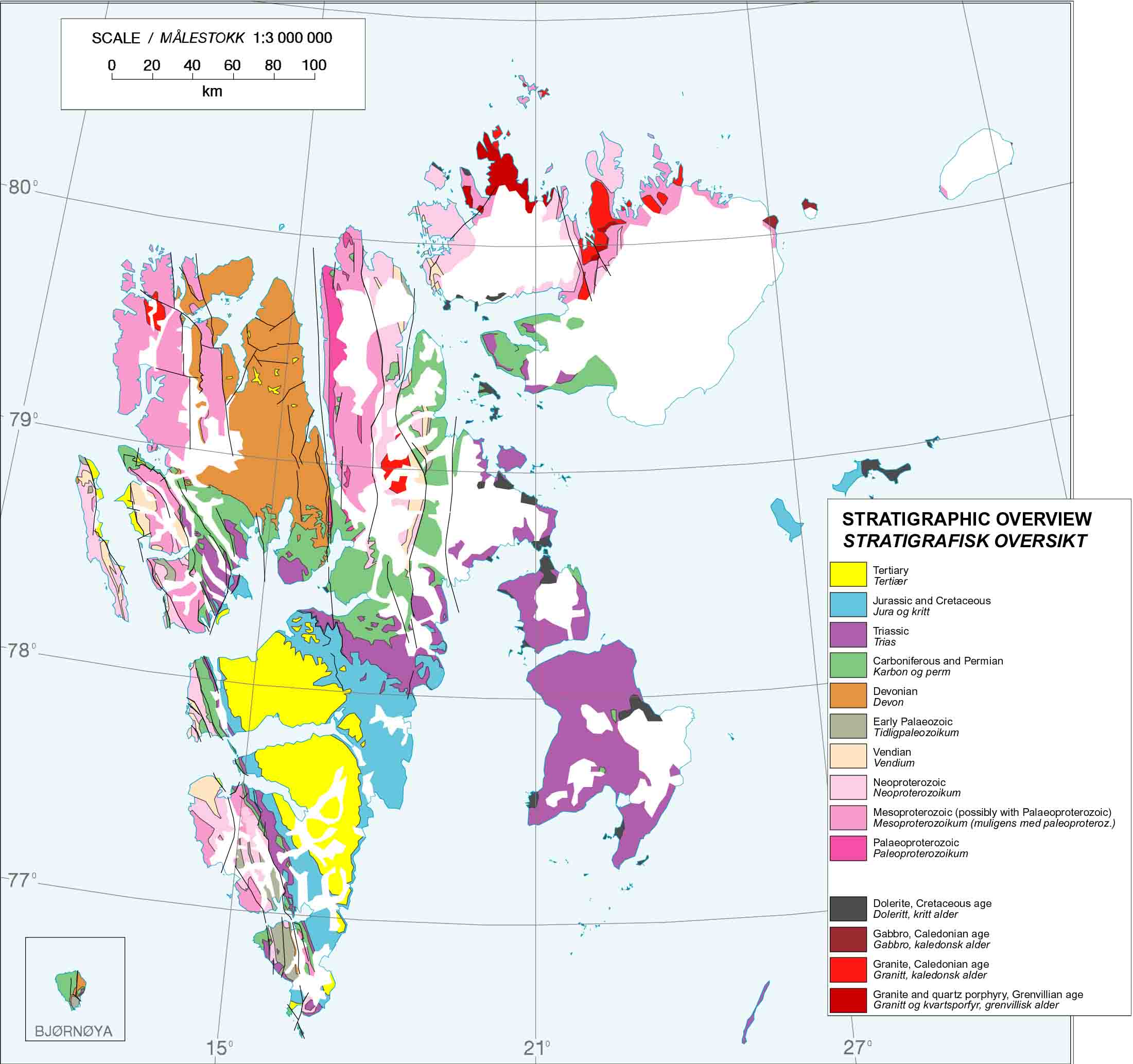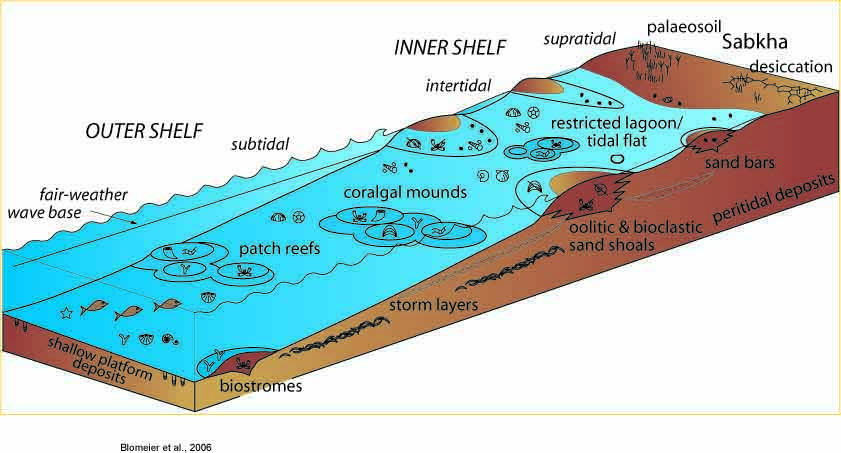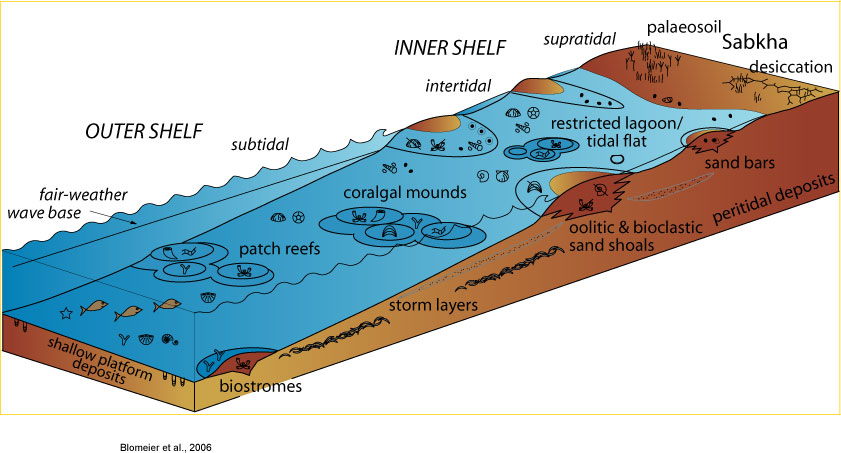
|
 Geology
of Svalbard Geology
of SvalbardA continuous succession Rocks can be found on Svalbard ranging from Precambrium to Tertiary. The geological map of Svalbard (also below) here gives a stratigraphic overview of the geology of Svalbard. Green represents Carboniferous and Permian rock, the subject of this field work. (Hjelle 1993, Aga 1986). Carboniferous and Permian During the Carboniferous and Permian, Svalbard was not located in the Arctic as it is today. At the beginning of the Carboniferous, it had a warm sub-tropical location at about 25 degrees N; by the end of the Permian it had drifted to 50 degrees N. This change in lattitude and consequent change in climate (though it is believed there were also additional causes for climate change on Svalbard during this time) is reflected in the sedimentary deposits and associated biota. The sedimentary rocks of the Carboniferous and Permian are divided into three groups: the Billefjorden Group (Tournaisian-Visean), Gipsdalen Group (Serpukhovian-Artinskian) and the Tempelfjorden Group (Artinskian-Kazanian).  The Billefjorden Group consists
largely of terrestrial deposits which formed under the humid sub-tropical
climate during the Early Carboniferous. These consist of alluvial fans
prograding into continental basins, and fluvial, lacustrine and swamp
deposits. The swamp deposits are rich in coal (the source of the active
coal industry on Svalbard today), as many deposits from the Carboniferous
are famous for around the world.
The Billefjorden Group consists
largely of terrestrial deposits which formed under the humid sub-tropical
climate during the Early Carboniferous. These consist of alluvial fans
prograding into continental basins, and fluvial, lacustrine and swamp
deposits. The swamp deposits are rich in coal (the source of the active
coal industry on Svalbard today), as many deposits from the Carboniferous
are famous for around the world.Svalbard's migration northward resulted in a semi-arid climate during the Late Carboniferous. Svalbard also experienced a sea level rise during this time due to extensional tectonics, resulting in the development of several N-S-trending half-grabens. The Gipsdalen Group sediments resulting are a mix of siliciclastic and calcareous sediments -- terrestrial red beds which grade into marginal marine sabkha evaporites and shallow-marine carbonate deposits containing fusilinids, corals, brachiopods and gastropods. These were generally warm-water, shallow-marine deposits, including carbonate platforms. The model below from Blomeier et. al 2006 depicts the depositional environments from this time.   After a hiatus, the Tempelfjorden Group (Kapp Starostin Formation) sediments were deposited during a transgression. During this time, the climate became more temperate, which is apparent in the major facies change which occurs here. There was deposition of cool-water carbonates, glauconitic sandstones, cherts and siliciclastics. The biota was now dominated by brachiopods, bryozoans, echinodermata and siliceous sponges. The sediments grade upwards into spiculitic shales/siltstones and cherts which were deposited in low-energy aerobic environments below the wave base. (Blomeier et al 2006, Scheibner & Blomeier 2004, Aga 1986) |








